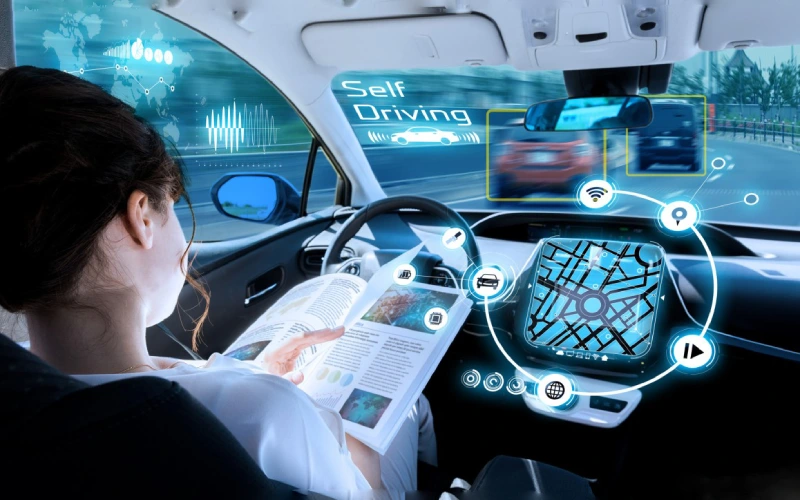The advent of autonomous vehicles has been a game-changer in the automotive industry. In this article, we’ll dive into the latest advancements in self-driving technology, the evolving regulatory landscape, and the profound impact autonomous vehicles are having on the way we perceive and interact with automobiles.
1. Advancements in Self-Driving Technology
Self-driving technology is advancing at an impressive pace. Companies like Tesla, Waymo, and traditional automakers are continually pushing the boundaries of what’s possible. These advancements primarily rely on sophisticated sensors, artificial intelligence, and machine learning algorithms. They enable vehicles to perceive and respond to their surroundings, making autonomous driving not only safer but also more practical.
2. Levels of Autonomy
The Society of Automotive Engineers (SAE) defines levels of vehicle automation from Level 0 (no automation) to Level 5 (full automation). We’re currently seeing vehicles primarily in the Level 2 (partial automation) category, where they can handle some driving tasks but still require human intervention. The goal, however, is to achieve full automation, where the vehicle can operate independently. This shift will significantly impact the need for traditional auto services like oil change service, as autonomous vehicles often have different maintenance requirements.
3. Safety and Accident Prevention
One of the key selling points of autonomous vehicles is the promise of increased safety. Human error is responsible for the majority of accidents on the road, and self-driving technology aims to minimize this factor. These vehicles can react faster and more accurately than humans, reducing the likelihood of collisions. While there have been incidents involving autonomous vehicles, the overall trend is toward safer roads.
4. Regulatory Challenges
As self-driving technology evolves, regulatory bodies are working to keep up with the rapid pace of innovation. The regulatory landscape is complex and varies from one region to another. Authorities are tasked with defining safety standards, rules of the road, and liability in the event of accidents. Striking the right balance between fostering innovation and ensuring public safety is a challenging task, but it’s vital for the widespread adoption of autonomous vehicles.
5. Ethical and Legal Considerations
Autonomous vehicles introduce a new layer of ethical and legal questions. For example, what happens in a situation where a self-driving car must choose between two undesirable outcomes, such as hitting a pedestrian or a cyclist? Who is liable in case of an accident involving an autonomous vehicle? These issues require careful consideration and may lead to the development of new legal frameworks.
6. Impact on Traditional Car Ownership
The rise of autonomous vehicles is challenging the traditional concept of car ownership. Many experts predict a future where people are more likely to use autonomous ride-sharing services than to own their vehicles. This shift could lead to fewer cars on the road, reducing congestion and potentially lowering the need for oil change service, as autonomous vehicle fleets will have different maintenance requirements.
7. Changing Urban Planning
The widespread adoption of autonomous vehicles will influence how cities plan their infrastructure. With fewer parking spaces required and less traffic congestion, urban areas can be redesigned to focus on green spaces, walkability, and improved public transportation. This transition could lead to a reduction in the need for parking garages and fuel stations, reshaping the urban landscape.
8. Environmental Impact
Autonomous vehicles can have a significant impact on the environment. With more efficient driving patterns, reduced congestion, and the potential for electric or cleaner fuels, autonomous vehicles can contribute to lower emissions and a more sustainable future. As a result, the automotive industry could shift its focus from traditional auto services, like oil change service, to maintaining and servicing electric or hybrid autonomous fleets.
Conclusion
The development of autonomous vehicles and self-driving technology is rapidly changing the automotive industry and the way we interact with our vehicles. As we progress towards higher levels of automation, safety and regulatory challenges must be addressed to ensure the successful integration of self-driving cars into our daily lives. While the impact on traditional car ownership and the need for services like oil changes is still evolving, one thing is clear: the autonomous vehicle revolution is on the horizon, and it promises a future of safer, more efficient, and sustainable transportation.






